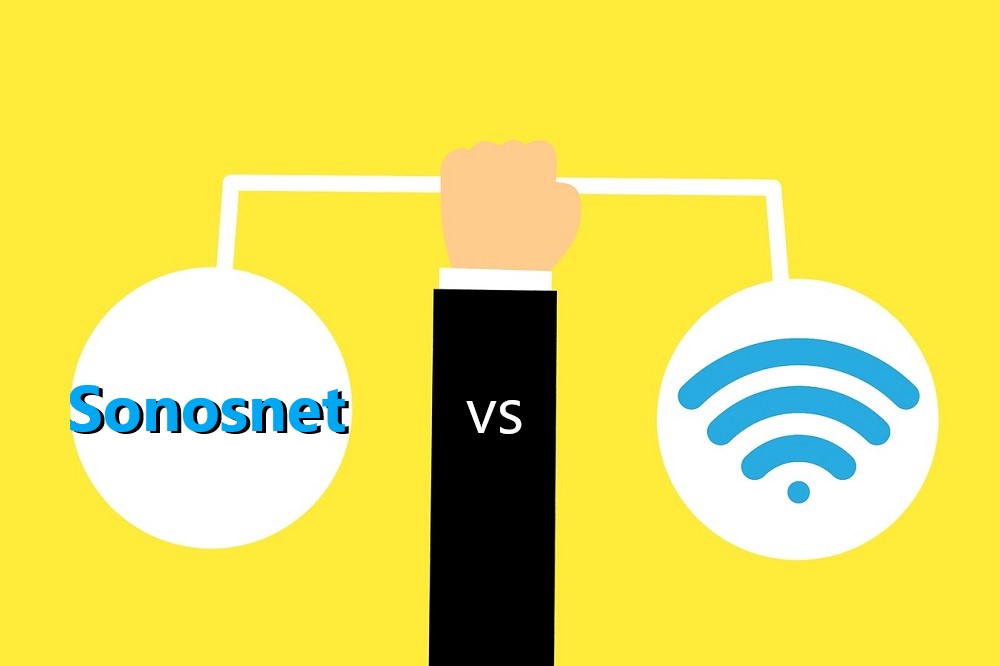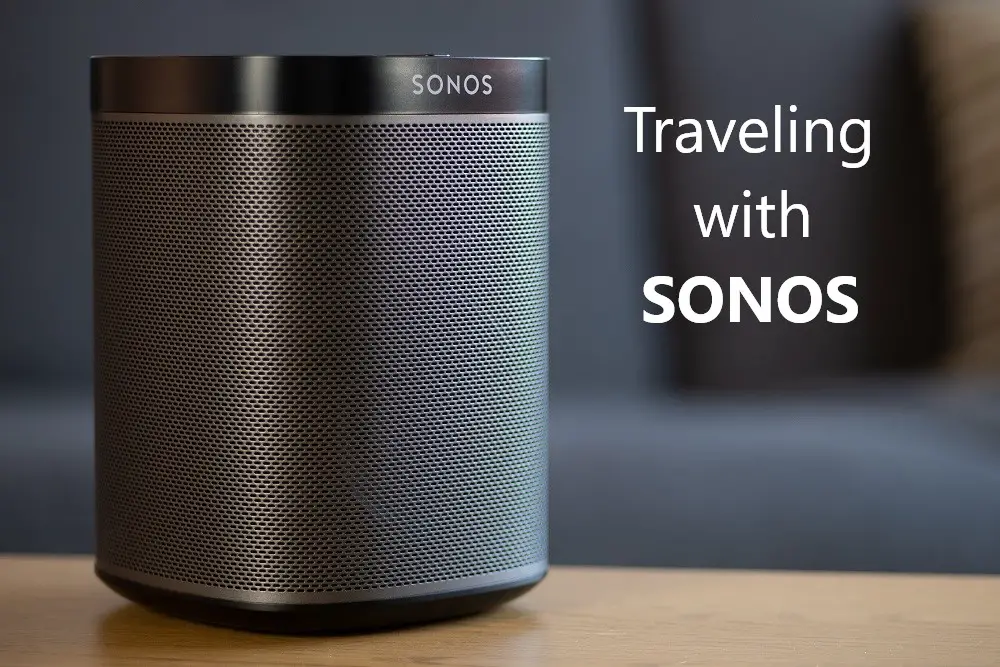While Sonos speakers are designed to be able to connect over home WiFi, they have another way to connect called Sonosnet that creates its own dedicated network between your Sonos speakers. But is Sonosnet better than WiFi?
Sonosnet is better than WiFi especially if you have many Sonos speakers spread across several large rooms. Sonosnet automatically configures itself, is a dedicated network, and avoids any issues with router configuration.

We’ll go through what Sonosnet is and how it works, as well as the pros and cons of Sonosnet versus WiFi. We’ll also go through some common tips and tricks so that you can get the most out of this feature.
Table of Contents
What Is Sonosnet?
Sonosnet is the system by which Sonos can connect to each other without having to be configured via the Sonos app. It is a proprietary system developed in-house to help Sonos products function smoothly without relying on third-party hardware or configurations.
Also referred to as a wired setup, you’ll need to keep at least one of your Sonos products wired to the router with an Ethernet cable.
This will create a dedicated wireless network for your Sonos system to operate on, as they can pass the wireless signal to other Sonos products. Any of the speakers could act as a repeater and extend the reach of the network.
In essence, the speaker plugged into the router becomes a sort of host for the others.
It will generally set itself up once at least one speaker is connected, but you can check in About My Sonos System in the app, and see whether every player has WM:0 next to it.
A WM:0 indicates SonosNet, and you can even go into Wireless Setup and delete or reset your Wi-Fi credentials to stop the system switching between Sonosnet and WiFi, but this step is not strictly necessary.
Some setups, like the Playbar and Sub, will always default to Sonosnet to connect the Sub to the other speakers.
As the setup of Sonosnet is happening, you should see the LEDs flashing on the Sonos units, and when they stop that should indicate that it is connected.
Pros and Cons of Sonosnet
| Pros | Cons |
|---|---|
| Larger range | Sonos device must be plugged into a router |
| More reliable than router/WiFi | Need to lock WiFi frequency for best performance |
| Excellent security | |
| Dedicated channel and bandwidth | |
| Autoconfiguration | |
| Works after making router configuration changes | |
| Good for traveling |
There are several advantages to Sonosnet. The first is that Sonosnet will likely work to connect all your Sonos units together to operate in a room that your WiFi won’t reach.
If your home WiFi network has some issues like it is too slow, patchy, unreliable, is below Sonos’ system requirements, then Sonosnet is a great alternative.
Sonosnet significantly reduces the distance needed to be broadcast between the individual Sonos units, and so allows for your Sonos system to extend further than the footprint of your wireless network.
Sonosnet is trivial to set up and will work even if you make router changes. As long as the router has an ethernet connection, Sonosnet will work once you have an ethernet cable in it.
Also, Sonosnet is very secure concerning unwanted access, as we discussed in our article.
If you’re traveling and only have access to limited internet, such as in a hotel, then accessing the router and plugging your Sonos speaker in can create a Sonos net that all your other Sonos speakers will connect to.
Is Sonosnet Better Than WiFi?
Sonosnet offers many advantages over configuring via WiFi. Sonosnet is a dedicated, optimized network to connect Sonos speakers in an effortless way and better than WiFi in most cases.
In almost all situations, it’s probably better to use Sonosnet. The very idea of Sonosnet underpins Sonos’ philosophy, and it has been programmed and tested to be very easy to use as it configures itself automatically once at least one device is connected.
Sonosnet has many extra benefits that you won’t get over the router’s WiFi connection, such as longer range, dedicated bandwidth, autoconfiguration, and generally much more reliability than most routers, which are not designed with wireless speakers in mind.
If you’re unable to change the WiFi broadcast signal or lock it to a specific value, it may sometimes conflict with the frequency that Sonosnet is using, causing dropouts or poor sound quality.
More on that here: Sonosnet Channels Are Relevant To You
Sometimes the setting for WiFi channels is defaulted to automatic, so just pick a different number from the list. Save and apply the changes, and see if the Sonosnet is performing better.
Almost every modern-day router of the last 10 years offers this, so it shouldn’t be an issue.
When Should I Use Sonosnet?
Unless your home setup is one where you cannot possibly plug a Sonos device into a router to activate Sonosnet, you should always try and set it up this way.
If possible, you should try and leave a reasonable amount of distance between the router and the connected speaker, but you don’t have to go overkill with this, generally, a few feet will be more than enough.
Some setups work better on the router’s WiFi, but for the vast majority of people, particularly where you have a fairly large and spread-out square footage to cover, Sonosnet is going to be the best configuration to use.
If you’ve spent time and money making sure your home WiFi setup is as good as possible, it can be tempting to want to use that over Sonosnet, but you should at least try it once and compare the two.
Up until July 2015, it was necessary to grab a Sonos Boost or Bridge to use a Sonos system, but since the updates, Sonos speakers can connect to the WiFi network on their own, or create the mesh network Sonosnet.



